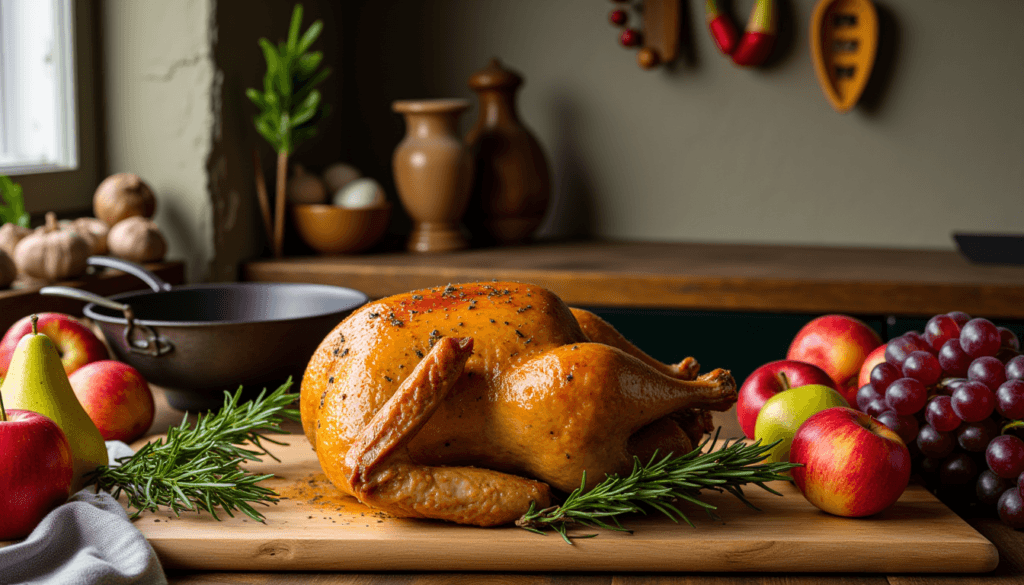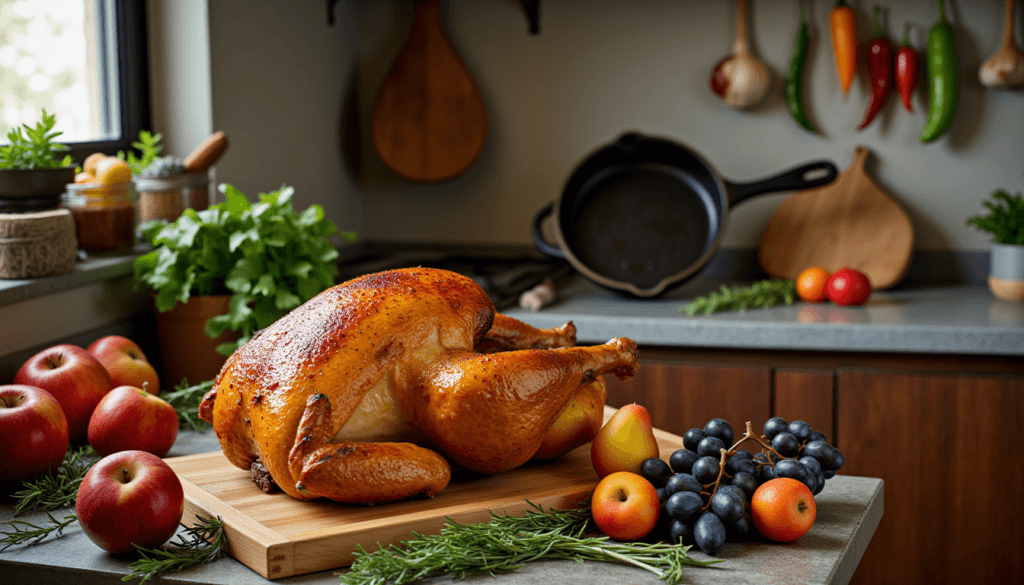How to Cook a Whole Chicken: 10 Expert Tips for the Best Results
Cook a whole chicken may seem intimidating at first, but it’s one of the most rewarding skills you can master in the kitchen. A perfectly cooked whole chicken is versatile, budget-friendly, and bursting with flavor. Plus, the leftovers are a meal prep dream—think sandwiches, soups, and salads. In this guide, you’ll discover the top 10 expert tips to ensure your whole chicken comes out perfectly golden, juicy, and mouthwateringly delicious every time.
Table of Contents
Why Cooking a Whole Chicken Is Worth the Effort
If you’ve ever hesitated to roast a whole chicken, let’s put those doubts to rest. Cooking a whole chicken has numerous benefits that go beyond the plate:
- Cost-effective: Whole chickens are often cheaper per pound compared to pre-cut pieces.
- Flavorful: Cooking with the bones and skin enhances the depth of flavor.
- Versatile: Leftovers can transform into multiple dishes, maximizing value.
- Sustainable: Using every part of the chicken—from bones for stock to the meat—reduces waste.

Tools and Ingredients for Success
To set yourself up for success, gather these essential tools and ingredients:
Tools:
- Roasting pan or Dutch oven: A sturdy vessel for even cooking.
- Meat thermometer: Ensures precise cooking and eliminates guesswork.
- Sharp carving knife: Makes slicing and serving effortless.
- Kitchen twine: Ideal for trussing the chicken (optional).
Key Ingredients:
- Whole chicken: Fresh or thawed, around 3–5 pounds for best results.
- Seasonings: Salt, pepper, and your favorite spices or herbs.
- Aromatics: Garlic, onion, lemon, and fresh herbs like thyme or rosemary.
- Fat: Butter or olive oil for basting.
10 Expert Tips for Cooking a Whole Chicken
1. Choose the Right Chicken
Start with quality. Opt for organic or free-range chickens when possible. These tend to have better flavor and texture due to healthier farming practices. Check the packaging for freshness indicators, such as a sell-by date, and avoid chickens with an overly strong odor or discoloration.
2. Bring the Chicken to Room Temperature
Cooking a cold chicken straight from the fridge can result in uneven cooking. Let your chicken rest at room temperature for about 30 minutes before you start. This small step ensures even heat distribution, making the meat tender and juicy.
3. Season Generously—Inside and Out
Don’t be shy when it comes to seasoning. Rub a generous amount of salt, pepper, and your preferred spices all over the chicken, including under the skin and inside the cavity. For extra flavor, stuff the cavity with aromatics like lemon wedges, garlic cloves, and fresh herbs.
4. Use a Meat Thermometer for Precision
Undercooked chicken is unsafe, while overcooked chicken can be dry and chewy. The solution? A reliable meat thermometer. Insert it into the thickest part of the thigh (without touching the bone). The safe internal temperature is 165°F (75°C).
5. Elevate the Chicken for Even Cooking
Place your chicken on a rack or bed of vegetables in your roasting pan. This allows hot air to circulate around the bird, ensuring crispy skin and even cooking. Bonus: The veggies absorb the flavorful drippings, making a perfect side dish.
6. Baste for Golden Perfection
During the cooking process, baste the chicken every 20–30 minutes with its own juices or a mixture of melted butter and herbs. This step keeps the meat moist and enhances the crispness of the skin.
7. Don’t Skip the Resting Time
Once your chicken is cooked to perfection, resist the urge to carve it immediately. Let it rest for 10–15 minutes. This allows the juices to redistribute, ensuring every bite is succulent.
8. Carve with Confidence
Carving a whole chicken doesn’t have to be daunting. Start with the legs and thighs, separating them at the joints. Then move to the breast, slicing evenly against the grain for maximum tenderness.
9. Save the Drippings and Bones
The drippings at the bottom of the pan are liquid gold. Use them to make a rich gravy or save them for soups. Don’t toss the bones, either; they’re perfect for homemade chicken stock.
10. Experiment with Cooking Methods
Roasting isn’t the only way to cook a whole chicken. Try spatchcocking (removing the backbone), grilling, slow cooking, or pressure cooking for different textures and flavors. Each method brings its own unique benefits.
Recipe Table: Classic Roasted Whole Chicken
| Ingredient | Quantity | Purpose |
|---|---|---|
| Whole Chicken | 1 (3–5 lbs) | Main ingredient |
| Garlic Cloves | 4–6 | Aromatic flavor |
| Lemon | 1, quartered | Adds brightness |
| Fresh Herbs (rosemary, thyme, etc.) | A handful | Infuses flavor |
| Butter or Olive Oil | 3 tbsp | Keeps meat moist |
| Salt and Pepper | To taste | Essential seasoning |
| Vegetables (carrots, onions, etc.) | 2 cups | Optional roasting base |
Troubleshooting Common Issues
Why Is My Chicken Dry?
If your chicken is dry, it means it has likely lost too much moisture during cooking. Several factors can lead to dry chicken:
1. Overcooking
- Common Culprit: Overcooking chicken is the most common reason for dryness. Chicken breast, in particular, is lean and dries out quickly if cooked beyond its ideal temperature.
- Solution: Use a meat thermometer and cook chicken to an internal temperature of 165°F (74°C). Remove it from heat slightly before it reaches this temperature, as carryover cooking will raise the temperature a few degrees.
2. Cooking Temperature
- High Heat: Cooking chicken at too high a temperature can cause the outside to overcook while the inside becomes dry.
- Solution: Use moderate heat for even cooking, especially for lean cuts like chicken breast.
3. Insufficient Resting
- Why It Matters: Cutting into chicken immediately after cooking lets the juices escape, resulting in dryness.
- Solution: Let chicken rest for 5–10 minutes after cooking to allow juices to redistribute.
4. Lack of Fat or Moisture
- Lean Cuts: Boneless, skinless chicken breasts have little fat, so they can dry out without added moisture.
- Solution: Marinade chicken in a mixture containing oil, acid (like lemon or vinegar), and seasonings. Alternatively, brine the chicken in a saltwater solution to help retain moisture.
5. Cooking Method
- Dry Methods: Methods like grilling, baking, or broiling without a sauce or covering can dry out chicken.
- Solution: Use methods like braising, poaching, or cooking in a sauce to keep chicken moist. Cover with foil when baking to trap moisture.
6. Size and Thickness
- Uneven Cooking: Thick pieces of chicken can remain undercooked in the center while the outside dries out.
- Solution: Pound the chicken to an even thickness before cooking.
7. Quality of Chicken
- Low-Quality Chicken: Previously frozen or low-quality chicken may already be dry due to poor processing.
- Solution: Use fresh, high-quality chicken for the best results.
By addressing these factors, you can achieve juicy, tender chicken every time!

Why Isn’t My Skin Crispy?
If your chicken skin isn’t crispy, it’s likely due to one or more issues with moisture, heat, or preparation. Here’s why your chicken skin might not crisp up and how to fix it:
1. Excess Moisture on the Skin
- Why It Happens: Moisture prevents the skin from crisping, as it causes steaming instead of browning.
- Solution:
- Pat Dry: Use paper towels to thoroughly pat the chicken dry before cooking.
- Air Dry: For extra crispiness, leave the chicken uncovered in the fridge for a few hours or overnight to dry out the skin.
2. Lack of Fat
- Why It Matters: Fat helps render the skin and makes it crispy. Without enough oil or fat, the skin may stay soft or rubbery.
- Solution:
- Rub the skin with oil, butter, or rendered chicken fat before cooking.
- For extra flavor, use a spice rub with a fat component, like olive oil or melted butter.
3. Low Cooking Temperature
- Why It Matters: If the heat isn’t high enough, the skin won’t crisp because it needs intense heat to render fat and brown properly.
- Solution:
- Cook at a higher temperature (e.g., 400–450°F or 200–230°C) for roasting or baking.
- When pan-searing, ensure the skillet is hot before adding the chicken.
4. Improper Cooking Method
- Why It Matters: Some cooking methods, like steaming or slow-cooking, don’t allow the skin to crisp up.
- Solution:
- Use dry heat methods like roasting, grilling, or pan-searing for crispy skin.
- If slow-cooking, finish the chicken under the broiler or in a hot skillet to crisp the skin.
5. Skin is Covered or Overcrowded
- Why It Happens: Covering the chicken traps steam, and overcrowding a pan prevents proper airflow, which keeps the skin from browning.
- Solution:
- Avoid covering the chicken during cooking.
- Cook in a single layer with space between pieces to ensure even airflow.
6. Seasoning Issues
- Why It Matters: Salt draws out moisture, which helps crisp the skin during cooking.
- Solution:
- Salt the chicken generously on the skin before cooking.
- Let the salt sit for a while to draw out moisture, then pat the skin dry again.
7. Pre-Cooked Chicken
- Why It Matters: If the chicken was cooked at a lower temperature initially, the skin may have already softened and won’t crisp later.
- Solution:
- Start with a hot pan or oven to ensure the skin crisps right away.
FAQ: Cooking a Whole Chicken
How Long Should I Cook a Whole Chicken?
Cook your chicken for about 20 minutes per pound at 375°F (190°C). Always use a meat thermometer to confirm doneness.
Do I Need to Truss the Chicken?
Trussing is optional but recommended. It helps the chicken retain its shape and cook evenly.
Can I Cook a Whole Chicken in a Slow Cooker?
Absolutely. Place the chicken on a bed of aromatics and cook on low for 6–8 hours. For crispy skin, finish it under the broiler.
Conclusion: Your Journey to Chicken Perfection
Cooking a whole chicken is more than just a culinary task; it’s an opportunity to create a comforting, flavorful centerpiece for any meal. By following these 10 expert tips, you’ll master the art of roasting a chicken that’s juicy, crispy, and absolutely delicious.
Now it’s your turn. Gather your ingredients, fire up your oven, and bring these tips to life. Don’t forget to share your results or your favorite chicken-cooking hacks in the comments below. Happy cooking!
